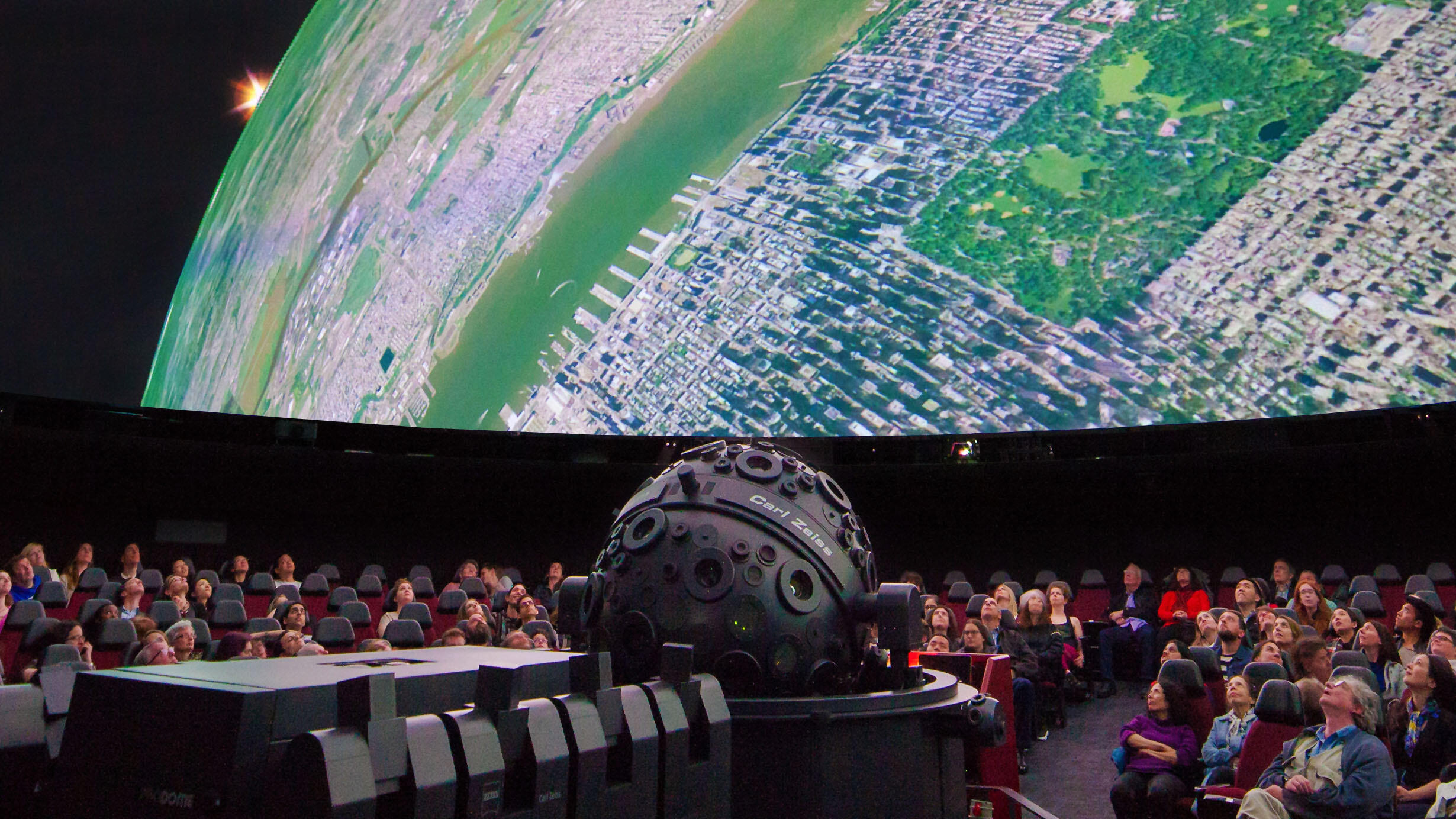Zeiss Projector
Part of the Worlds Beyond Earth exhibition.
 M. Shanley/© AMNH
M. Shanley/© AMNH © AMNH Library/Image no. 00293651
The Museum’s first Zeiss projector, the Mark II, was a centerpiece of the Hayden Planetarium when it opened in 1935. Produced in Germany, where Carl Zeiss Optical Works developed a revolutionary moveable projector for the Munich planetarium 10 years earlier, the instrument arrived in New York in 31 separate boxes and required two months to set up. The Zeiss made a big impression: two large projector-studded “star balls” at each end tracked stars mechanically with a single motor and a gear system was operated by technicians. Presenters wore tuxedos during what was then called the Sky Show.
© AMNH Library/Image no. 316020
“I’ll never forget the first time I saw the Zeiss. I thought it was a monster, a giant praying mantis,” City Council Member Stanley E. Michaels of Manhattan told The New York Times in 1999 about his memory of visiting the Hayden Planetarium at age 5. “Forget about the stars in the dome—I could have looked forever at the projector.”
Today’s model, the Zeiss Mark IX, fit into just 14 boxes when it arrived at the Rose Center for Earth and Space in 1999. It produces a 9,100-sun star field with high-intensity white light through 32 fiber-optic projectors, runs on more than 30 motors controlled by computers, and sports a single “star ball” with built-in dimmers.
See how the Zeiss projector is used to show Hayden Planetarium visitors the night sky.
Visitors can experience the Zeiss at select Astronomy Live programs, including annual favorites about exploring the skies of the Southern Hemisphere or the winter solstice. “It wins out for the sheer beauty of the stars—they twinkle!” says Museum astrophysicist Jackie Faherty. “Nothing else comes close.”
Read more about